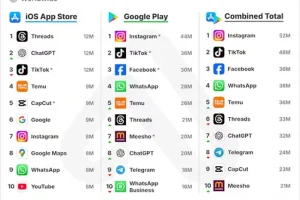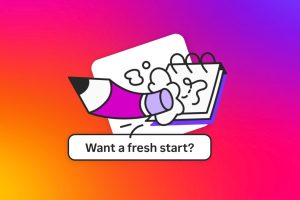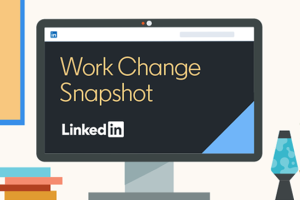The opportunity is clear: Organizations that accelerate their upskilling and reskilling can move ahead of the curve at a crucial moment. A continuous learning environment is fundamental to achieving this.
Benefits of creating a culture of continuous learning
There are many benefits of continuous learning for both organizational success and employee career development. To name a few:
- Employee engagement, motivation, and productivity: Surveyed employees cite “opportunities to learn and grow” as the No. 1 driver of an exceptional work culture.
- Positive impact on talent retention and pipeline: Employees at organizations with highly rated work cultures are 31% more likely to recommend working for their organization and 25% more likely to report being happy working there. According to the Workplace Learning Report, 93% of organizations are concerned about talent retention and “providing learning opportunities” is the No. 1 way they’re addressing it.
- Develop a sustainable internal mobility engine: A vast majority of L&D pros (79%) agree that it’s less expensive to reskill a current employee than to hire a new one. And learning new skills and being in line for lateral and upward internal moves can engage and motivate employees.
- Future-proof your talent: Continuous learning is inherently geared toward professional agility at a time where skill-building needs to be fluid, adaptive, and persistent.
How to build a culture of continuous learning at your company
Key to developing a culture of continuous learning is empowering employees and managers to map their own learning journeys. Companies should provide them with the tools, time, and motivation to make it a self-directed priority.
Tailor learning to each employee and their career goals
Buy-in occurs when professional development merges with personal development. Align with what appeals to your employees. The top four motivators for employees to learn are:
- Progress toward career goals
- Staying up to date in their fields
- Having dedicated time for learning
- Personalized learning for their interests and career goals
From an L&D perspective, you can touch all four motivations with a program that creates the time and space for blended learning and ensures the content is relevant to the learner at an individual level. Work with employees to map out short-term and long-term career goals, and then develop a plan to reach both through continuous learning. Build in checkpoints, milestones, incentives, and reviews every three to six months to keep things on track.
Ensure you’re offering a spectrum of advancement levels, so new employees can lock down the fundamentals and tenured employees can keep building expertise or exploring new areas.
Equip your teams with flexible, accessible, easy-to-use learning software
Online learning software like LinkedIn Learning uses AI and machine learning to make personalized learning scalable. The platform also offers an excellent user experience, making self-directed e-learning easy and intuitive and is built to power continuous learning.
Train managers to support professional development as a core skill
Managers play an instrumental role in sustaining a culture of continuous learning. It’s important to prioritize this as a key skill and an area of ongoing employee training in its own right.
According to the Workplace Learning Report, only 35% of employees were encouraged to learn by their manager in the past six months. This type of disconnect stymies a successful learning culture. Fortunately, the same report shared that improving in this area was among the top three training priorities for managers in 2023:
- Leadership and management skills
- Role-specific digital upskilling and digital transformation
- Supporting employee career development
Continuous learning examples
Continuous learning can take many shapes and forms. Here are a few ways you might go about implementing a continuous learning strategy at your organization:
- Leadership training program: Strong leadership pipelines are key to sustainable business success. A program driven by continuous learning would involve continually developing these leadership skills and elevating talent while empowering established leaders to play a role in ushering in the next wave.
- Mentorship: Mentoring and coaching offer additional ways to activate your own talent to support the career journeys of others within the organization. Mentorship was cited as the No. 1 area of focus for L&D programs in 2023.
- Innovation programs: Creating regular opportunities for employees to apply new skills and experiment in different areas helps fuel the curiosity that drives continuous learning. Consider bringing together cross-functional teams for ideation sessions or innovation sprints.
- Community-based learning: This style of social learning, says an earlier Talent Blog post, “connects learners to colleagues, peers, and experts to drive higher engagement and inspire skill-building. . . . The goal is to create a sustainable and intentional learning loop where learners are inspired to learn by someone they respect, encourage and invite others to learn with them, and instruct those who have asked for help.”
Show the benefits of continuous learning to company leaders
Demonstrate the impact of a continuous learning culture by sharing and celebrating its measurable outcomes on business goals. Look past vanity metrics like employee job satisfaction survey scores or volume of courses completed and dial into business metrics like these:
- Learning completion rates
- New-hire readiness
- Employee retention
- Internal mobility
- Time and budget saving
- Progress toward closing skill gaps
Encourage a lifelong learning mindset
Today’s senior business leaders and executives understand the reality of this moment — skill-churning forecasts like the ones shared earlier are prevalent and significant. L&D has a tremendous opportunity to step up and take the lead, preparing their organizations and talent for whatever lies ahead with agile adaptability.
With a continuous learning culture, you’ll be ready.










